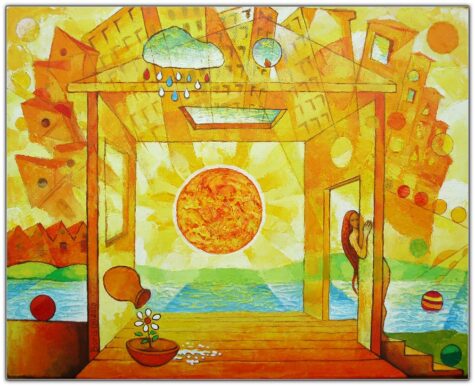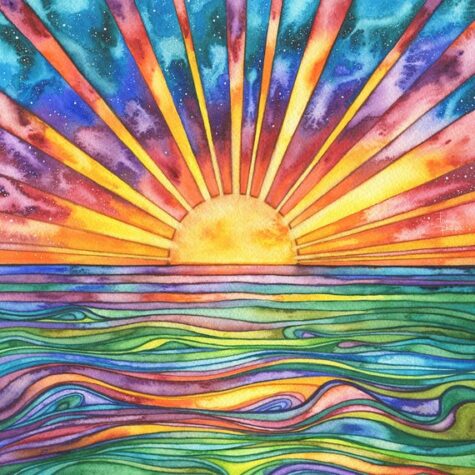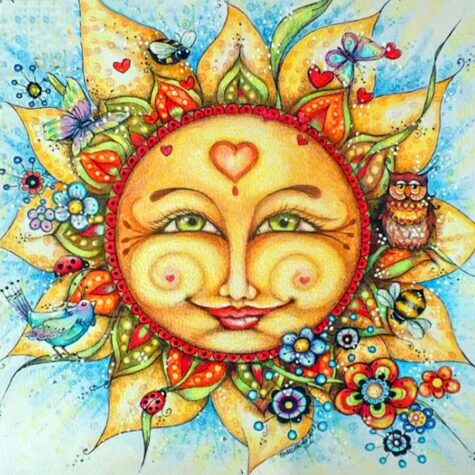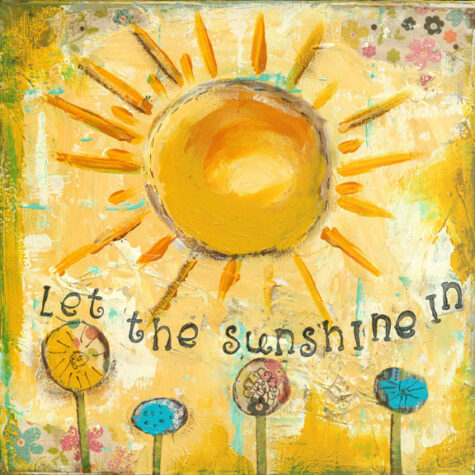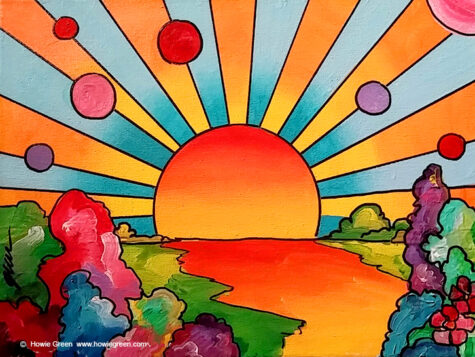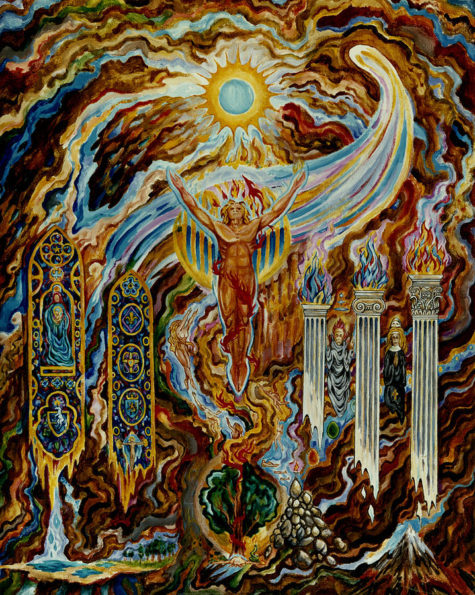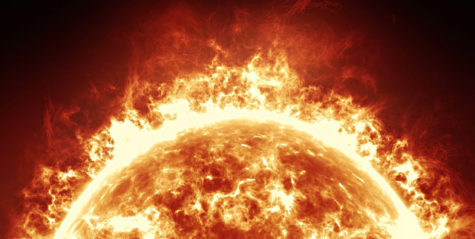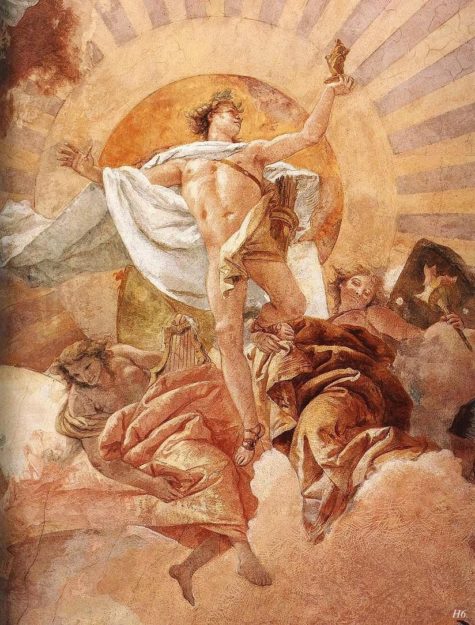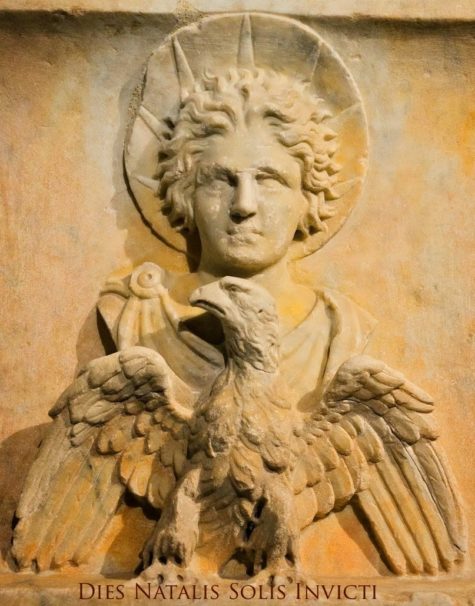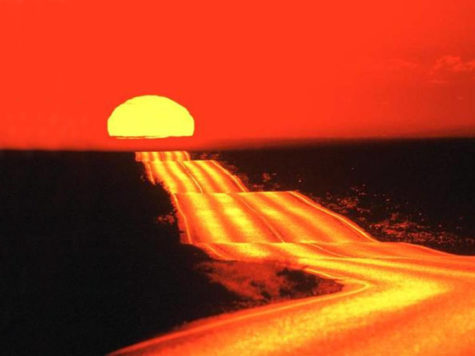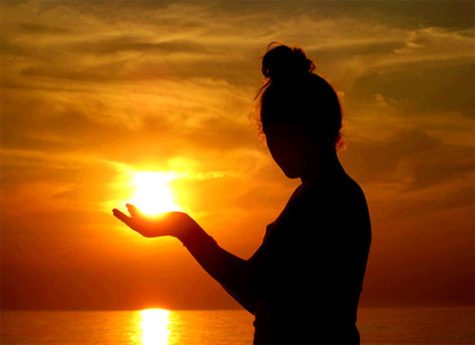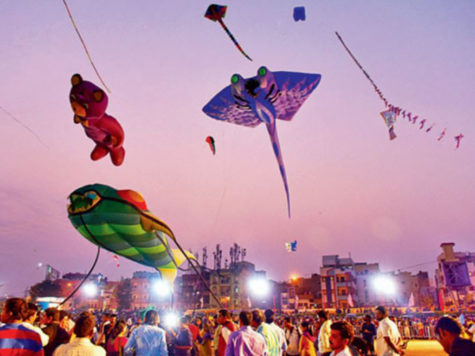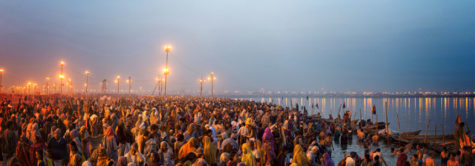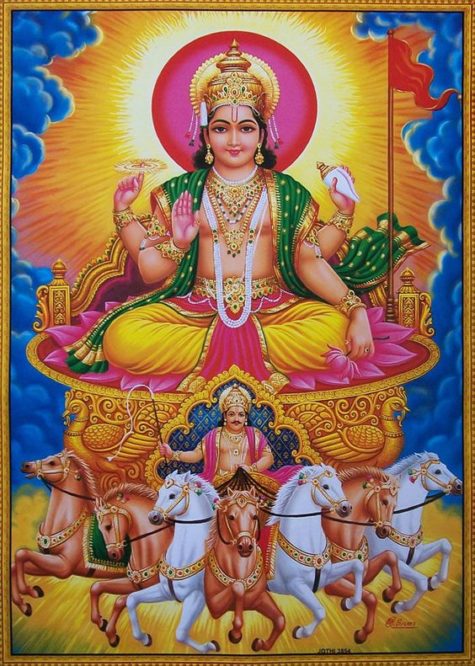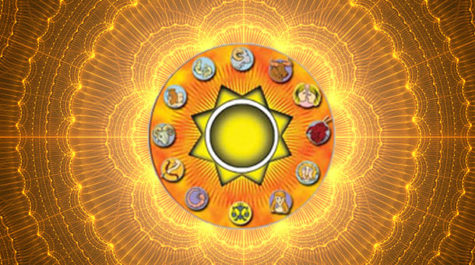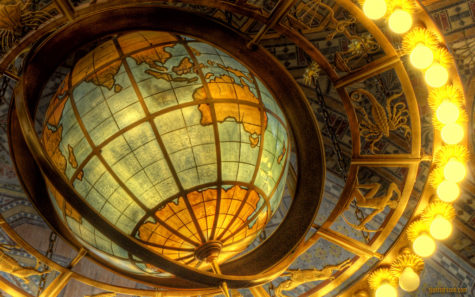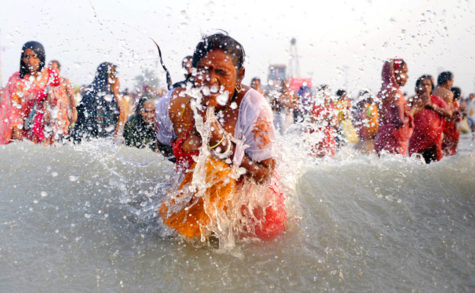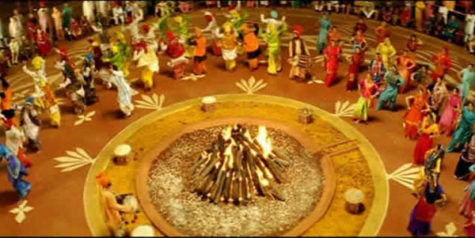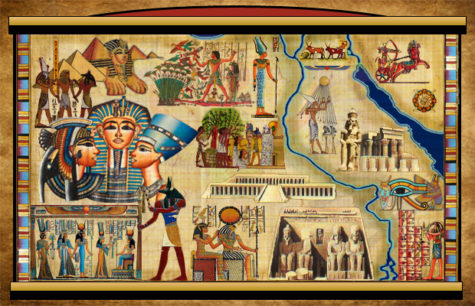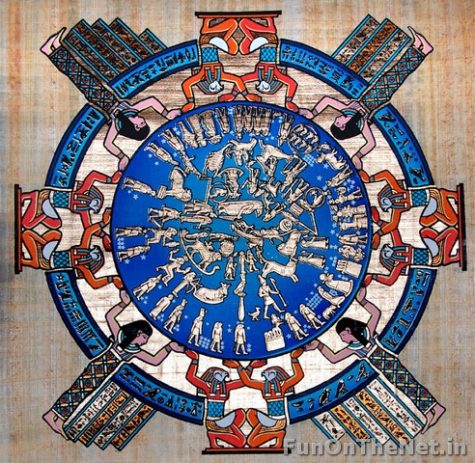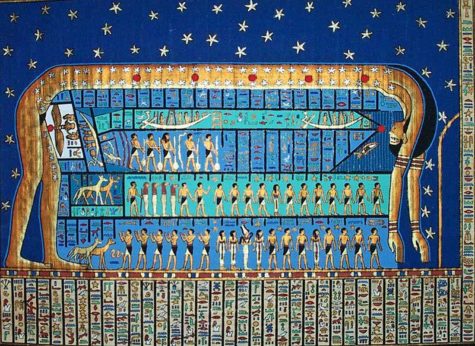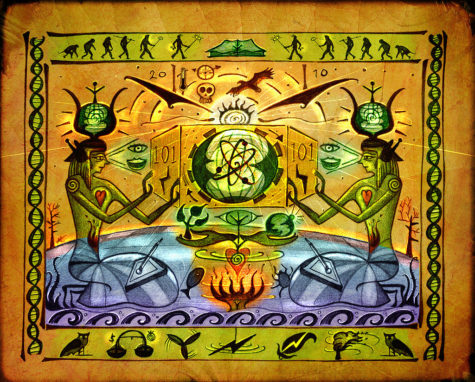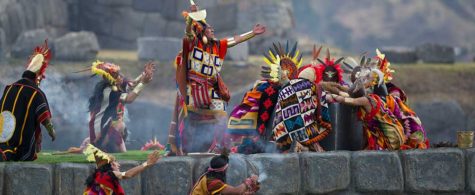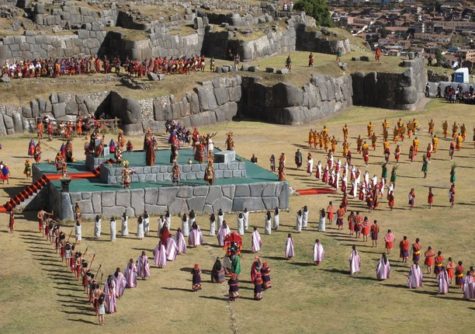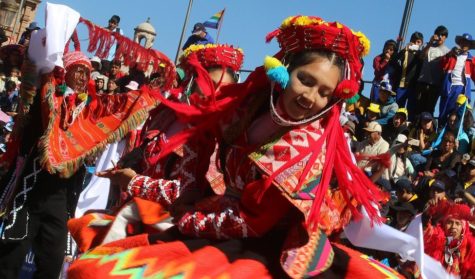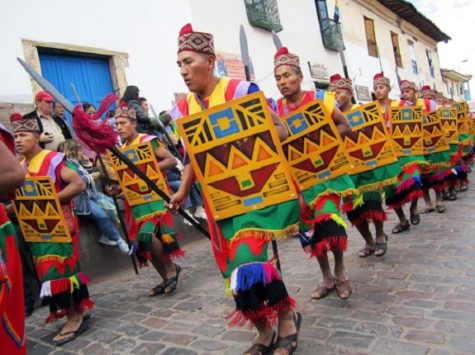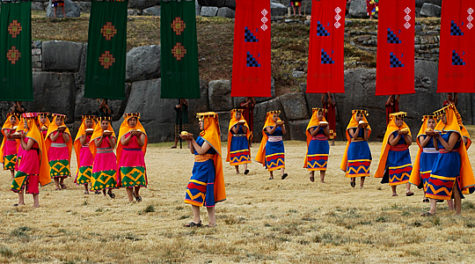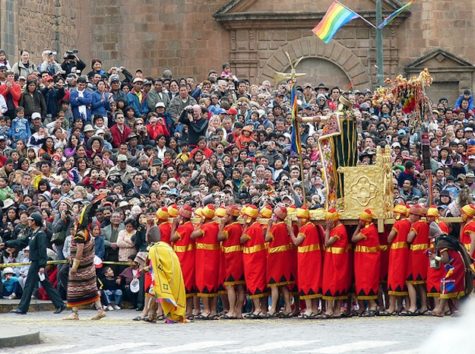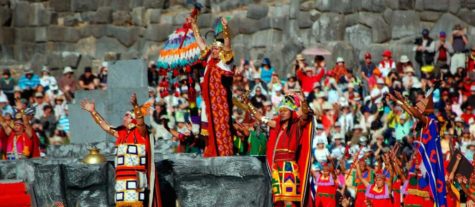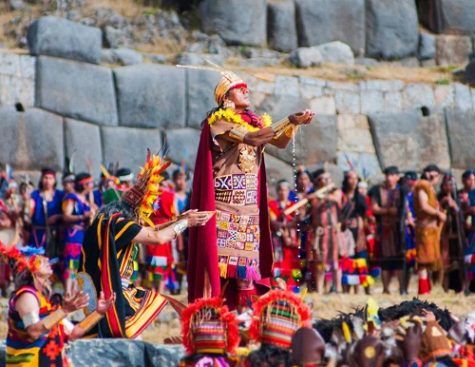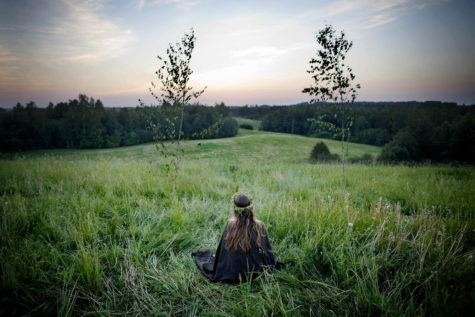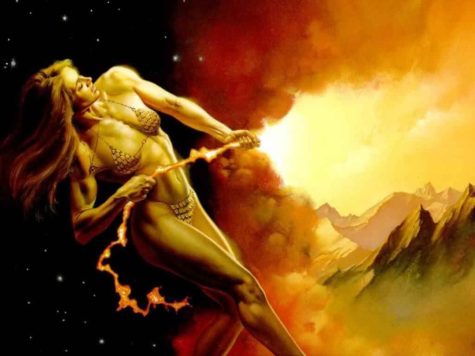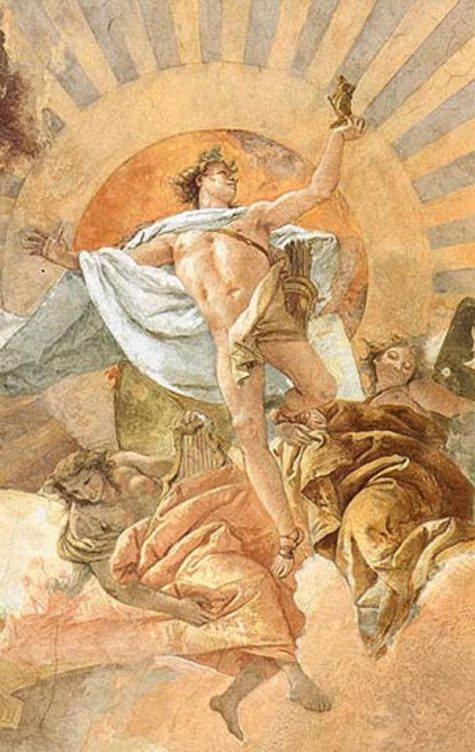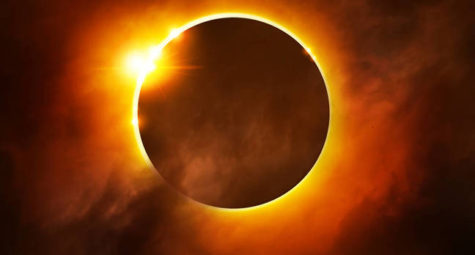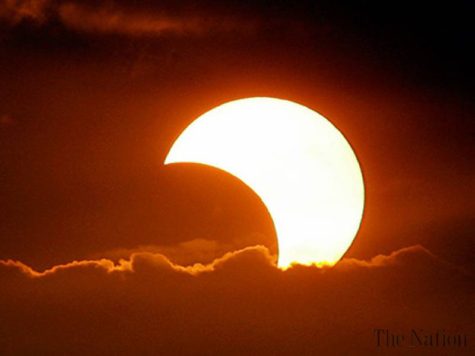Sun
Human beings have been appreciating sunshine from the beginning of time. Today, April 19, is Sunshine Day, a day dedicated specifically to the pure enjoyment of the warmth and light that comes from the Sun. The sun is moving out of the fiery sign of Aries and into earthy Taurus, and after a long winter, there is nothing quite like a clear, cloudless spring day when you can go outside and enjoy the sunshine.
Scientifically, sunshine or sunlight is the radiation that the sun gives off. Figuratively, the word is also used for cheerfulness, warmth, and happiness.
I just can’t stay inside all day
I gotta get out get me some of those rays
Everybody’s smilin’
Sunshine day
Everybody’s laughin’
Sunshine day
Everybody seems so happy today
It’s a sunshine day
~Stephen McCarthy
Why Celebrate Sunshine Day?
The Sun is perhaps the most important influence in our lives. He heralds the coming of each new day, and lets us know that it’s time to get up and get going But more importantly, His appearance actually makes us feel like getting something done. In His light, we’re motivated to move about, grab our to-do lists, and become productive members of humankind ~ something crucial in today’s busy world, since no one I know can afford to waste a perfectly good day.
But the very sight of Him does much more for us than that. It just can’t help but make us smile. And that even goes for folks like me who aren’t morning people at all. There’s just something downright joyous about seeing the Sun light the world around us. The Sun lightens our moods, quickens our steps, warms our hearts, and just generally makes us happier people.
Those aren’t the only things the Sun does for us, though. He also contributes largely to our good health. how? By supplying our recommended daily dosage of Vitamin D, the very substance that helps the body to absorb calcium. And not only does the Sun manage this without effort on His part, He manages it without effort on ours. Only about ten minutes of sunshine per day does the trick ~ and we’re well on our way to having healthy bones and stronger bodies.
The Sun’s list of responsibilities goes on and on. He rules our calendar, starts each week by holding dominion over Sunday, and marks the comings and goings of the seasons in the cycles of His journey.
His position in the sky at the time of our births is responsible for our natal signs, and thus He is largely responsible for how the rest of the world views us.
He’s responsible for the blowing of the winds, the growth of the plants, flowers, and trees that populate the Earth and for the oxygen we breathe.
And even with all this stuff on His plate, He still finds time to entertain us with sunbeams, rainbows, sundogs, and the like. I’d say that he is a very busy star, indeed.
Taking all this into consideration, it’s little wonder that the Sun has managed to infiltrate our lives as a household word.
- We say happy people have a sunny disposition.
- We refer to those with freckled faces as being sun-kissed.
- Florida is known as the “Sunshine State.”
- Japan is known as the land of the “Rising Sun.”
- Scandinavia is the land of the “Midnight Sun.”
- We don sunglasses and sun hats, then head for the beach to sunbathe.
- We add sun porches to our homes, and have sunroofs installed in our vehicles.
- We also brew sun tea, order our eggs sunny-side up, and purchase Sunny Delight at the grocery store.
Even the realm of musical entertainment isn’t immune to the influences of that big, blazing, gaseous mass that warms our backs and lights our way. Remember these songs?
- You Are My Sunshine
- Here Comes The Sun
- Seasons In The Sun
- Waiting For The Sun
- Good Day Sunshine
- Let The Sunshine In
The Sun influences our lives in other ways, too. If it weren’t for the Sun, in fact, life as we know it would simply cease to exist. Without His warming presence, plant life would be nearly nonexistent. Vegetables would be limited to root crops like potatoes and carrots. And flowers? Well, they’d be a thing of the past as well, since even those that bloom at night need His light and warmth to bring them to bud.
But even if we could do without all those amenities, other problems would surface. Without sunlight, electric bills would skyrocket, and without warmth, so would heating bills. And there’s no way we could just go back to the basics of firewood and candlelight. Why? Because without the warming rays of the Sun, trees would be in short supply. And using them for heating, cooking, and melting wax would not only drive them to extinction, but would present a much larger problem: a total lack of oxygen to our planet. The Earth would be come a cold, dark, dank place. For all practical purposes, it would be virtually uninhabitable.
And yet we tend to take the Sun for granted. We simply expect it to rise each day and light the Earth. Maybe it’s not our fault, though. Since we live in such a modernized world, the magick of the Sun seems nothing less than commonplace. But no matter whose fault it is, such an attitude is also pure and unadulterated travesty ~ for the magick of the Sun is truly nothing less than miraculous!
Thinking About The Sun
I have been thinking about the Sun a lot, and a number of things have occurred to me.
- We can count on the Sun. It shows up every day… on time… as expected.
- The Sun shines on everyone, saints and sinners alike. It doesn’t matter if you are a good person, if you deserve the sunshine, or if you are a terrible person and don’t deserve it at all. The Sun is right there, shining.
- Even when we can’t see it, it’s there. Cloudy skies, storms, and rain? The Sun is still shining. Even at night, that Sun is still shining somewhere.
- The Sun is the Sun no matter what. We can complain that it’s too hot, or we can wish the days were longer, or shorter. We can throw temper tantrums, we can beg, we can cry, we can do ritual and ceremonies… and the Sun remains the Sun. It does not change it’s essential nature to suit our needs. It is what it is. No apologies ~ no regrets.
- The Sun is good. Yes, too much Sun can have a detrimental effect. But, in essence, the Sun is good. It gives us life, warmth, happiness, energy, Vitamin D. It shines. Some people really suffer from not enough Sun during the Winter months.
- Does the Sun worry about the future? I bet not! I don’t think it dwells on the past either. I can’t imagine the Sun is full of angst and regret, remorse and guilt, frustration and anger. I think the Sun is way too big, too powerful, too in the moment for that kind of thing.
- The Sun withholds nothing. Boom! There it is. The Sun. In all it’s glory. All of it. Not just some of it, or pieces of it… all of it. Right there in the sky. Shining.
- I don’t think it’s a stretch to say that we love the Sun. We love it because it is, we love it because of what it does for us, we love it because we need it, we love it because we love shiny things… we have lots of different reasons to love the Sun.
I wonder what would happen if I was more like the Sun.
A Sun Meditation
At sunrise, sit facing the sun. Meditate on light, on the dawning of a new day. Ask yourself what it is you wish to bring into your life. Thank the sun for illuminating your path.
At sunset, watch the sun as it disappears over the horizon. Reflect on your day and the coming darkness.
- What shadow aspects of your being do you need to confront?
- What do you want to release, or complete in your life?
- What do you need to work on in your night dreams?
Give thanks and make an offering to Father Sun; receive his blessings and gifts.
Creating Your Own Sunshine
Just in case today is a rainy, stormy, or otherwise dreary day, I found this nice little article by Missy Haugen about how to create your own Sunshine. Enjoy!
Sunshine. To me, sunshine means warmth. It means happiness and smiles. When the sun is shining, many people are more pleasant to work with, more open to new ideas and more productive. It’s true, studies have proven that!
Years ago, after a drought of sunny days I challenged myself to find ways to spread sunshine even when there were clouds in the sky. One thing I tested out was seeing if the word ‘sunshine’ had similar affects as looking outside and seeing the sun shine and I found that it was true. When I talked about sunshine or asked people their plans for the next sunny day, people would smile.
This challenged me to take things a step further and see what else I could do to brighten people’s day. What I discovered was that whether it was a piece of chocolate, a short conversation at the drinking fountain, or a fun greeting when they arrive at work like “good morning, sunshine.” It brought out smiles. We were able to forget about the dreariness going on outside and enjoy the day.
What I learned from my challenge is that I can’t wait for the sun to shine in order to have a great day. There are many things that can bring out the sunshine on a cloudy day and I need to take things into my own hands. So, the next time the sun decides to hide out for a few days, try any of these tricks to bring a little light to everyone’s day:
- Tell a joke/laugh with those around you.
- Share a new recipe.
- Take the time to chat over a cup of coffee.
- Give a sincere compliment.
- Help someone out with a task.
These are just some things that can bring a little light to someone’s life. What are some things that you do to bring the sunshine when it’s dreary outside?
Sources:
- Vocabulary.com
- Everyday Sun Magic
- Circle of Song
- The Prosperity Project
The Sun will “die” at midnight on December 21, but don’t panic, it will “rebirth” on midnight December 24. This occurs at the beginning of Winter every year for the past 4.6 billion years. It is called the Winter Solstice, “sun stood still”, and is considered the shortest day in the year in terms of hours of sunlight.
It is a three-day period when the hours of daylight are at its shortest and the hours of night (darkness) are at its longest. Noticeably, the sun progressively sets earlier each evening after June 22 (The Summer Solstice – longest hours of sunlight) and night fall comes the earliest on December 21. Hence daylight savings time put our clock one hour back to make up for the shorter hours of day light.
Needless to say, the Sun is vital to our life here on earth and is one of the most important star in our world. It is the nearest star to Earth and is believed to be formed 4.6 billion years ago. It is the most important source of energy for life on Earth and its diameter is about 109 times that of Earth, with mass about 330,000 times that of Earth. The sun accounts for about 99.86% of the total mass of the Solar System and is so large that about 1,300,000 planet Earths can fit inside of it.
Awesome.
WOW.
Worthy of Worshiping?
Sun Worship
Well, our ancestors did just that more than 9000 years ago and it is still being done today. The ancients selected December 21, the Winter Solstice as the ideal time to invoke the sun. Maybe if you were living in the north pole and had long, dark harsh winters to deal with you might want to invoke the sun too.
In the solar myth, the death of the “old sun” occurs as the length of daylight decreases and becomes its lowest at the Winter Solstice which begins on the midnight of December 21 (early morning December 22) and ends on Midnight December 24 (early morning December 25). The sun stop moving south on December 22, it is then at its lowest point in the Northern Hemisphere, residing in the vicinity of the Southern Cross. It stays at this lowest point for three days (December 22, 23, 24 appearing to not moving south or north and was considered “dead”).
It “returns to life” at midnight on December 24/ early morning December 25, when it begins its northern journey again and the hours of sunlight start to lengthen. Therefore, the ancients said that the SUN was born on December 25. As a result, festivals and feasts were done to honor Sol or Mithra.
Interestingly, on December 24, Sirius (star in the east and brightest star in the night sky) aligns with the three brightest Orion belt stars called the Three Kings, (Alnitak, Alnilam and Mintaka) and on December 25, these all point to the location where the sun will rise on earth that day. In essence, the three kings follow the star in the east to find the sunrise (birth of the sun).
Solar deities and Sun worship can be found throughout most of recorded history in various forms, including:
- Ra ~ Egypt,
- Mithra ~ Persia,
- Apollo ~ Rome
- Surya ~ India
- Amaterasu ~ Japan
- Sol ~ Germanic
- Tonatiuh ~ Aztec
- Jesus ~ Christianity
Birthday of the SUN or the SON?
As a Baptist, I grew up with the belief that December 25 is the birthdate of Jesus Christ and as such we worship and acknowledge it as Christmas. Indeed, Christmas is big— very big. The entire Island of Jamaica comes to a virtual standstill. Schools and colleges are closed; businesses shut down to give their employees time off; many families plan trips and get-togethers; Church attendance increase; and gifts are given by even those who were scrooge all year long. Maybe you recall, the Christmas Carol that even erroneously say “ Long time ago in Bethlehem, so the Holy Bible said, Mary’s boy child Jesus Christ, was born on Christmas Day”
However, recall all these activities were already being done in Rome, Babylon, Persia, Greece, and Egypt to acknowledge and worship the birth day of Sol Invicta (the Unconquered Sun) up to 4000 years before Jesus Christ was born. It then begs the question, whose birthday are we celebrating on December 25? Does Jesus the SON share the birthday with the SUN?
How did the birth of the Sun get changed?
According to scriptures, Jesus Christ was whipped, spat upon, publicly dishonored then killed by the Church (Caiaphas the high priest) and the State (Pilate the Roman governor). After Jesus’s death, his followers had to go “underground” as they too were meeting the same or worse fate than Christ. These “Followers of Christ” (not Christians as Christianity wasn’t start as yet) were stripped and flogged with whips, stoned to death, and persecuted.
Yet, despite the persecution, the “Followers of Jesus” went underground and their church started to flourish and soon became a major concern to the Roman government. They were blamed for spreading “mischief” that Jesus Christ was king and lord, and was crucified to save our souls. Followers of Christ were also accused of destabilizing the economy and threatening civil war.
To stop the possibility of civil war and at the same time keep the existing pagan occult worshipers, Constantine, in AD 326 at the Council of Nicaea, “married” Christ like sentiments (name and life story) with that of Rome’s mysticism and called it Christianity. This new “Christianity” became the official religion of Rome and the SUN was replaced by the SON with Isis and Osiris became Mary and Jesus. December 25 was then decreed as Jesus birthday with the Spring Equinox full moon in March/April designated as his death day.
In short, today’s Christianity is an unholy marriage of Roman Idolatry and Christ sentiments designed by Constantine to maintain religious and political if not economical order and harmony in the empire.
Sol Invictus (Unconquered Sun) is a very important star in our solar system without a doubt. As the main source of energy, we can understand the need to recognize it and maybe even glorify its daily presence in our lives. Many people deliberately and some unwittingly worship and glorify the SUN between December 21 – 25 to show appreciation.
If you are interested, a Ritual to Bring The Sun can be found in the Book of Shadows, and a number of invocations, prayers, and poetry specifically dedicated to the Sun can be found at Widdershins.
Honoring The Sun Every Day
One really great way to honor the Sun (and yourself) is with a series of body positions called Sun Salutations. An excellent time to begin this ritual is on the morning of the Winter Solstice just as the sun is rising, (facing east). If a sunrise Sun Salutation isn’t possible, but you want to include this in your morning routine, pick a time before breakfast, and that will be fine.
The Sun Salutation, (Surya Namaskar), is a series of 12 yoga postures performed in a single, graceful flow. Each movement is coordinated with the breath. Inhale as you extend or stretch, and exhale as you fold or contract. The Sun Salutation builds strength and increases flexibility. Different styles of yoga perform the Sun Salutation with their own variations. However, the flow presented below covers core steps used in most styles.
For the series below, a single round consists of two complete sequences: one for the right side of the body and the other for the left.
Sun Salutations
Even on days when you think you have no time for yoga, try and do at least one or two rounds of the Sun Salutation. You’ll feel the difference.
 1. Mountain:
1. Mountain:
Begin by standing in Mountain pose, feet about hip width apart, hands either by your sides or in prayer position. Take several deep breaths.
 2. Hands up:
2. Hands up:
On your next inhale, in one sweeping movement, raise your arms up overhead and gently arch back as far as feels comfortable and safe.
 3. Head to knees:
3. Head to knees:
As you exhale, bend forward, bending the knees if necessary, and bring your hands to rest beside your feet.
 4. Lunge:
4. Lunge:
Inhale and step the right leg back.
 5. Plank
5. Plank
Exhale and step the left leg back into plank position. Hold the position and inhale.
 6. Stick
6. Stick
Exhale and lower yourself as if coming down from a pushup. Only your hands and feet should touch the floor.
 7. Upward Dog
7. Upward Dog
Inhale and stretch forward and up, bending at the waist. Use your arms to lift your torso, but only bend back as far as feels comfortable and safe. Lift your legs up so that only the tops of your feet and your hands touch the floor. It’s okay to keep your arms bent at the elbow.
 8. Downward dog
8. Downward dog
Exhale, lift from the hips and push back and up.
 9. Lunge
9. Lunge
Inhale and step the right foot forward.
 10. Head to knees
10. Head to knees
Exhale, bring the left foot forward and step into head-to-knee position.
 11. Hands up
11. Hands up
Inhale and rise slowly while keeping arms extended .
 12. Mountain
12. Mountain
Exhale, and in a slow, sweeping motion, lower your arms to the sides. End by bringing your hands up into prayer position. Repeat the sequence, stepping with the left leg.
Put it all together, and it looks like this:
If the stick figures are not quite “doing” it for you, here’s a video:
Source: Notclif
Makar Sankranti (also known as Makara Sankranthi or Maghi) refers both to a specific solar day in the Hindu calendar and a Hindu festival in reference to deity Surya (sun) that is observed in January every year. It marks the first day of sun’s transit into the Makara (Capricorn), marking the end of the month with the winter solstice and the start of longer days.
- Significance: Festival of Harvest, welcome longer days, sun worship
- Celebrations: Kite flying, bonfires, fairs, surya puja in river, feast, arts, dance, socialization
Makar Sankranti is one of the few ancient Hindu festivals that has been observed according to solar cycles, while most festivals are set by the lunar cycle.
Being a festival that celebrates the solar cycle, it almost always falls on the same Gregorian date every year (January 14), except in rare years when the date shifts by a day for that year, because of the complexity of earth-sun relative movement.
Makar Sankranti is observed with social festivities such as colorful decorations, rural children going house to house, singing and asking for treats (or pocket money), fairs, dances, kite flying, bonfires and feasts.
The Magha Mela is mentioned in the Hindu epic, the Mahabharata, thus placing this festival to be around 2,000 years old.
Makar Sankranti is regarded as important for spiritual practices and many people take a holy dip in sacred rivers or lakes, especially Ganga, Yamuna, Godavari, Krishna and Cauvery. The bathing is believed to result in merit or absolution of past sins.
Every twelve years, the Hindus observe Makar Sankranti with one of the world’s largest mass pilgrimage, with an estimated 40 to 100 million people attending the event. At this event, they say a prayer to the sun and bathe at the Prayaga confluence of the River Ganga and River Yamuna at the Kumbh Mela.
Because the festival is dedicated to the Hindu sun god, Surya, people also pray to the sun and thank for their successes and prosperity. The traditional prayer to the sun is the Gayatri Mantra.
The Gayatri Mantra
The mantra is a hymn to the sun which represents both the physical sun and the Divine in all things. Here it is:
Om bhur bhuvah svah
tat savitur varenyam
bhargo devasya dhimahi
dhiyo yo nah prachodayat.
The eternal, earth, air, heaven
That glory, that resplendence of the sun
May we contemplate the brilliance of that light
May the sun inspire our minds.
Chanting the mantra serves three purposes.
- The first is to give back to the sun. The sun gives but never receives. The mantra is a gift back to the sun, an offering of gratitude to refuel the sun’s gracious offering.
- The second purpose is to seek wisdom and enlightenment. The mantra is a request to the sun: May we meditate upon your form and be illumined by who you are? (Consider that the sun offers its gift of illumination and energy to all beings, without judgment and without attachment to the outcome of the gift.)
- Finally, the mantra is an expression of gratitude, to both the life-giving sun and the Divine. The sensibility it evokes is more important than the literal meaning. It’s an offering, a way to open to grace, to inspire oneself to connect to the ancient vision of India.
An Auspicious Period
Makar Sankranti is regarded as the beginning of an auspicious phase or the holy phase of transition. It also marks the end of an inauspicious phase which begins around mid-December. Further it is also believed that any sacred ritual can be performed from this day onwards. The auspicious day of Makar Sankranti marks the beginning of warmer and longer days as compared to nights.
Makar Sankranti is all about forgetting bitter and sad moments which happened in the past and welcoming the new phase of life which is full of purity, knowledge and wisdom.
The Significance of Makar Sankranti
The significance of the Makar Sankranti festival is that it marks the day where there is a significant movement in the zodiac ~ the arrangement of the earth’s dial around the sun ~ and this movement brings about a new change in the way we experience the planet itself.
There are many sankrantis through the year; the two significant ones being Makar Sankranti, and right opposite, after summer solstice is Karka Sankranti. In between, there are many Sankrantis ~ every time the zodiac sign changes, it is called a Sankranti to suggest the movement of the planet, to understand that our life is sustained and nourished by this movement. If this movement ceases, everything about us will cease.
On the 22nd of December, the solstice happened, that means in relation to the sun, the movement or the tilt of the planet reaches its maximum. Now, from this day on, the northern movement is strong. Things really start changing upon the earth. From Makar Sankranti onwards, winter is being relieved step by step.
This movement is also a significant aspect in the way we reap from this planet. There was a time when human beings could eat only what the earth offered. Then we learned how to get what we wanted from the earth; this is called agriculture. When we were hunting and gathering, we only picked up what was there.
It is like when you were an infant, you ate or swallowed whatever your mother gave you. When you became a child, you asked for what you wanted. So we grew up a bit and started demanding and getting what we wanted, but still, you can only get what you want to a point that She is willing. If you stretch it beyond that, you will not only not get it, you will get something else. That is called industrialization.
Agriculture is coaxing the Mother to give what you want. Industrialization is ripping her apart. I am not speaking against something. I want you to understand the way our minds are transiting, the way human activity is transiting from one level to another.
So this is a day when we remind ourselves that everything that we are is what we take from this planet. I see everywhere in the world, people are talking about giving. I don’t know from where they give. You can only take ~ either you take gently or you grab. Did you come with your own property from somewhere? What is there to give? You can only take. Everything is offered. Take sensibly, that is all there is.
Some Thoughts About Movement
Makar Sankranti is celebrated as a very important festival in India. Sankranti literally means “movement.” Everything that we recognize as life is movement. Fortunately, people who came before us have moved on, and people who come after us are waiting for us to move on ~ don’t have any doubts about this.
The planet is moving and that is why it churns up life. If it were still, it wouldn’t be capable of life. So there is something called movement in which every creature is involved, but if there has to be movement, this movement has to be housed ~ this movement can only happen in the lap of stillness. One who does not touch the stillness of his life, one who does not touch the stillness of his being, one who does not know or has not tasted the stillness within and without, will invariably get lost in the movement.
Movement is pleasant only to a point. The planet earth is moving gently in such a beautiful manner ~ it is only changing seasons. Tomorrow, if it just speeds up, throttles up a little bit, then all our seemingly balanced minds will become imbalanced, everything will spin out of control. So movement is beautiful only to a certain point. Once it crosses that point, movement becomes torture.
So Makar Sankranti is a festival to recognize the movement, movement being celebration, movement being life, movement being the process of life and the beginning and the end of life. At the same time, the word ‘shankara’ is used to remind you that the one behind this, Shiva, is a still one; stillness is the basis of movement.
Though all the other planets are moving, the most important one is not moving. If the sun also takes a walk, then we are in trouble. He hangs there not moving. That is why everybody else’s movement is okay. But his stillness is relative because the whole solar system may be moving; the whole galaxy may be moving. So beyond that, the space which holds all this is absolute stillness.
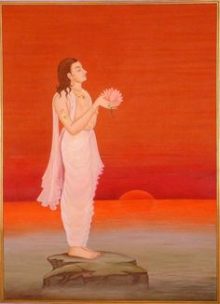 When a human being makes the necessary effort to touch the stillness within himself, only then he knows the joy of movement. Otherwise, people are bewildered by the movement of life. Every change that happens in their life they suffer.
When a human being makes the necessary effort to touch the stillness within himself, only then he knows the joy of movement. Otherwise, people are bewildered by the movement of life. Every change that happens in their life they suffer.
These days, the so-called modern life is like this ~ any change means you must suffer. Childhood is tension, puberty is great suffering, middle age is unbearable, old age is abhorred and feared, and death is celebration ~no that is pure terror.
Every stage of life is a problem because people have a problem with movement, not understanding that the very nature of life is movement. You can only enjoy and celebrate movement if you have one leg stuck in stillness. If you know what stillness is then movement would be a pleasure. If you do not know what stillness is, if you have no contact with stillness, movement is bewildering.
People are trying to track the movement. Looking at the stars, looking at lines in their hands and looking at all kinds of signs including the tea leaves. People want to read the movement of their lives somehow. This struggle with movement, this paranoia about movement, is happening because there is no taste of stillness.
If there was a taste of stillness in you, movement would not disturb you. It is something which sets a certain rhythm. Every rhythm has a beginning and an end; every movement has a beginning and an end. Movement means that which is in transition. Stillness means that which always is. Movement means compulsiveness, stillness means consciousness.
The significance of Makar Sankranti is that it is the time to remind yourself that celebrating movement is possible only when there is a taste of stillness within you.
Regional Celebrations
Because the festival is celebrated in winter, people start preparing food which can give them give them energy and also keep their body warm. Tilguls ~ Laddu of Til (Sesame) is made up of Jaggery and devotees also pay respect to Goddess Saraswati.
This type of sweet is a symbolism for being together in peace and joyfulness, despite the uniqueness and differences between individuals.
People greet each other Happy Sankranti by saying Tilgul Ghya Aani God God Bola.
For most parts of India, this period is a part of early stages of the Rabi crop and agricultural cycle, where crops have been sown and the hard work in the fields is mostly over. The time thus signifies a period of socializing and families enjoying each other’s company, taking care of the cattle, and celebrating around bonfires.
The Makar Sankranti festival is also known and referred to as the harvest festival because this is the time when harvesting is complete and there are big celebrations. This is the day we acknowledge all those who assisted in making the harvest. The farm animals play a huge role in harvesting, so the following day is for them and is called Mattu Pongal.
The first day is for the earth, the second is for us and the third is for the animals and livestock. See, they are placed a little higher than us because we exist because of them, they do not exist because of us. If we were not here, they would all be free and happy. But if they were not here, we couldn’t live.
These festivals are a reminder that we need to craft our present and our future in a conscious manner.
Also, on this day there are several Melas or fairs which are been held and one of the most famous among all melas is Kumbh Mela. It is been held every 12 years at one of four holy locations namely Haridwar, Prayag, Ujjain and Nashik.
The Magh Mela which is the mini mela is held annually at Prayag, the Gangasagar Mela held at the Ganges River, Tusu Mela in parts of Jharkhand and West Bengal and many more such fairs are been held on this auspicious day.
Regional Names
Known by different names and celebrated with different customs in different parts of the region, Makara or Makar Sankranti is an important pan-Indian solar festival observed on the same date, sometimes for multiple dates.
It is known as Pongal in Tamil Nadu, Pedda Panduga in Andhra Pradesh, Biku in Assam, Magha Mela in parts of central and north India, as Makar Sankranti in the west, and by other names. The festivities associated with Makar Sankranti are known by various names such as Lohri by north Indian Hindus and Sikhs, Sukarat in central India, Bhogali Bihu by Assamese Hindus, and Pongal by Tamil and other south Indian Hindus.
Wikipedia gives us this list:
- Suggi Habba, Makar Sankramana , Makara Sankranthi: Karnataka
- Makar Sankranthi: Andhra Pradesh, Telangana, Kerala
- Makar Sankranti: Chhattisgarh, Goa, Odisha, Bihar, Jharkhand, Madhya Pradesh, Maharashtra, Manipur, Rajasthan, Sikkim, Tripura, Uttar Pradesh, Uttarakhand, West Bengal and Jammu
- Thai Pongal, Uzhavar Thirunal: Tamil Nadu
- Uttarayan: Gujarat
- Maghi: Haryana, Himachal Pradesh and Punjab.
- Magh Bihu or Bhogali Bihu: Assam
- Shishur Saenkraat: Kashmir Valley
- Khichdi: Uttar Pradesh and western Bihar
- Poush Sangkranti: West Bengal
- Tila Sakrait: Mithila
In other countries too the day is celebrated by Hindus, but under different names and in different ways.
- Nepal: Maghe Sankranti or Maghi- /Khichdi Sankranti
- Bangladesh: Shakrain/ Poush Sangkranti
- Pakistan: (Sindh): Tirmoori
Sources:
By the time writing first appeared (around 3100 B.C.E.) ancient Egyptian life centered around no less than three calendars. The lunar calendar, the civil calendar, and the Sothic calendar. These calendars were based on the celestial patterns of the moon, the sun, and the star Sirius, respectively.
The Lunar Calendar
The moon with its regular cycle became the oldest time keeper. Coinciding with a woman’s menstrual cycles, it was the perfect instrument to keep track of her and the animal’s fertile times and to record the patterns of life. No wonder the goddesses Isis and Hathor were associated with the moon.
The Solar Calendar
The civil calendars were solar based and used the movement of the sun across the sky to signal the approaching seasons. When roaming the countryside, chasing game, and gathering food gave way to the practice of agriculture, it became more important for our ancestors to master the signs of the growing seasons than to follow animal migration patterns.
Early agriculturists began to look up at the sky in an effort to learn when to prepare the ground, when to plant, and when to reap. Unlike lunar calendars, solar calendars marked the solstices (the longest and shortest days of the year), as well as the equinoxes (when the days and nights were of equal length).
In addition, seasonal changes that affected the growing season were predicted by observing the rise of certain constellations, particularly those constellations that followed the ecliptic (the apparent path of the sun through the heavens). Thus, the appearance of the twelve zodiacal constellations formed an important part of the civil and solar calendar.
Correcting The Inconsistencies
Because the moon cycles didn’t exactly match the sun cycles, five intercalary days, called Epagomenal Days, were eventually added to the calendar year. In Egypt those five days honored the births of the great neters (Supreme Deities) Osiris, Horus, Seth, Isis, and Nephthys. Even after the Epagomenal Days were added to the solar calendar, it was still inexact because the true year is actually a few hours longer than 365 days.
To determine exactly when the seasons would change and when to sow or harvest, the Egyptians began to track and observe all the heavenly bodies, including the moon, the sun, the constellations, and the brightest, most visible stars. By watching the sky over the years, people began to notice that just before dawn near the summer solstice, the rising of the Dog Star Sirius, the brightest star in the heavens.
The rising of this star was a better, more reliable predictor of the coming of the flood season than the solar calendar alone. When the star appeared, the flood waters flowing from the southern mountains and highlands appeared soon after. By observing Sirius, preparations for planting and sowing could be made well in advance. In addition, the regularity of the rise of Sirius most closely resembled the true length of the year.
The Sothic Calendar
The brilliant star Sirius, appearing in the constellation we know as Canis Major, was ancient Egypt’s most important star. The Egyptians called the star Sopdet and equated it with Isis, the powerful goddess of regeneration.
The Greeks called the star Sothis, later developing a so-called Sothic calendar that kept even more regular track of the years and the seasons, being most nearly 365.25 days. Even then the calendar still wasn’t perfect.Incremental changes were occurring due to the rotation of the earth, the tilt of the earth, and the procession of the equinoxes.
The Civil Calendar
By divine decree laid down in the mists of prehistory, the Egyptian priest-king swore never to alter the civil calendar, even though its solar-basted calculations were not keeping up with the changing seasons. The reason for this seemingly irrational adherence lay in the fact that the year had been divinely established by the god of wisdom and time, Thoth.
Thoth’s laws were the laws of the gods, and divine laws were considered unalterable. The real reason may have been that astrologer priests were tracking an even larger arc of time – a procession not of the sun and moon, but of the equinoxes – that resulted in a kind of calendar of the ages.
When the Greeks arrived in Egypt, however, they saw little value in maintaining such a cosmic calendar when the civil calendar was so woefully out of alignment. Once they established themselves as kings, the Ptolemaic Greeks believed that the time had come to alter Thoth’s divine law. They coerced the priests into adding an extra day every four years to even out the true calendar. The result created the leap year, which we use even to this day.
How The Egyptian Calendar Works
At first Egypt’s calendar seems hard to understand because we are conditioned to our own notions of month and season derived from the Romans. Really, the ancient Egyptian calendar is fairly simple. The year has twelve months, the months have three weeks, and each week has ten days. This represented the basic system of the lunar year.
Tacked on to the end of these 360 days were the five Epagomenal Days, added to create the 365 days of the solar year. The Epagomenal Days signaled the end of the year and were followed by the new year’s celebration, just as New Year’s Day follows New Year’s Eve in our calendar. But, whereas we begin counting in the winter month of January, the ancient Egyptians began counting at the rise of the Dog Star Sirius, which occurs in the middle of our summer.
This system makes perfect sense because the new year signaled the beginning of a new agricultural cycle. When the Dog Star rose, the Nile flooded, and the parched earth was refertilized The sacred actions of the Nile River – its flooding, its retreat into its banks leaving fertile soil, and its eventual low flow creating drought conditions – determined not only the major festivals of the pharaoh and his people,but the three seasons of the year.
The Three Seasons
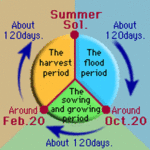 The ancient Egyptians did not celebrate four seasons of spring, summer, fall, and winter as we do. Rather, their three seasons were uniquely timed to the particular agricultural requirements in their geographic region. The three seasons were:
The ancient Egyptians did not celebrate four seasons of spring, summer, fall, and winter as we do. Rather, their three seasons were uniquely timed to the particular agricultural requirements in their geographic region. The three seasons were:
- Ahket – Innundation
Also called the Red Season, it extended from mid July to mid November, when most of the river valley and Delta were underwater.
- Pert – Sowing
Also called the Black Season, it extended from mid November to mid March, the equivalent to our spring, which the Egyptians called the Coming Forth.
- Shemu – Harvest
Also called the White Season, it extended from mid March to mid July when crops were harvested. By season’s end, everything was dry and the fields were scorched.
From: Feasts of Light
The great and supreme powers of ancient Egypt were the Gods and Goddesses of nature. The coming of the annual flood, the blossoming of the lotus, the rising of the brightest star in the sky, the disappearance of the moon, the eclipsing of the sun, the cutting of the wheat – all were occasions in which the Divine manifested on earth.
The religious life of the ancient Egyptians was marked by the celebration of the following kinds of sacred events:
- Festivals dedicated to a particular god or goddess which honored them through the public remembrance of their mythic lives.
- Festivals which honored the dead, bringing together a sense of the tribal community and the ancestral history and marking the cycles of time.
- Festivals which initiated the agrarian work cycles of preparing, sowing, and harvesting, as well as lying fallow.
In all probablity these seasonal festivals were determined by astronomical markers, such as the equinoxes, the solstices, and the rise of particular stars and constellations.
These were sacred events to which the Great Gods and Goddesses provided their blessings, for they were the manifestations of the cosmic cycle of nature. The will of the Gods was made known through the great pattern laid out in the sky by celestial phenomena.
There earliest festivals were those celebrating the mysteries of the Goddess in her appearance as the day and night sky, as both sun and moon. Most of the original ancient Egyptian feast days were celebrated at the new or the full moon. The ancient hieroglyph for “month” was the image of the moon itself. Apparently, the original festival calendar was lunar.
Of course, many Egyptian feast days are moveable feasts; that is, they are lunar festivals timed to phases of the moon. Thus, their occurrence might slip around from one year to the next. Other Egyptian festival dates were set by the motion of the stars, the planets, and the actions of the sun.
In any true sense it would be impossible for us to know the actual recurring dates of many of the festivals. We can, however approximate the ancient dates, which is what most Egyptologists do.
During the season of Inundation more major public festival occurred than at any other time of the year, most of them related to fertility rites and abundance rituals. The feasts tended to occupy the general public during this time because the land was so flooded that little real work could be done.
By comparison, the Sowing season had fewer festivals. Once the waters receded and work in the fields began, the Sowing season was the busiest time of year. The growing season was quickly followed by the Harvest season. But during the final months of the year, when the harvest had ended and the land was dry, the festivals began again, mostly in anticipation of the coming Inundation.
The festival calendar, as it appears to us now, spans three thousand years of Egyptian history and probably was being recorded, observed, and manipulated many thousands of years before that. In those three millennia a great many political and religious changes affected the designated feast days. Some feasts fell out of favor, others were renamed, a few were entirely forgotten.
From: Feasts of Light
The Inti Raymi (Quechua for “sun festival”) is a religious ceremony of the Inca Empire in honor of the god Inti (Quechua for “sun”), one of the most venerated deities in Inca religion. It was the celebration of the winter solstice – the shortest day of the year in terms of the time between sunrise and sunset and the Inca New Year.
Note:
In territories south of the equator the gregorian months of June and July are winter months. It is held on June 24.
During the Inca Empire, the Inti Raymi was the most important of four ceremonies celebrated in Cusco. The celebration took place in the Haukaypata or the main plaza in the city.
According to chronicler Garcilaso de la Vega, Sapa Inca Pachacuti created the Inti Raymi to celebrate the new year in the Andes of the Southern Hemisphere. The ceremony was also said to indicate the mythical origin of the Incas. It lasted for nine days and was filled with colorful dances and processions, as well as animal sacrifices to thank Pachamama and to ensure a good cropping season.
The first Inti Raymi was in 1412. The last Inti Raymi with the Inca Emperor’s presence was carried out in 1535, after which the Spanish and the Catholic priests banned it.
In 1944, a historical reconstruction of the Inti Raymi was directed by Faustino Espinoza Navarro and indigenous actors. The first reconstruction was largely based on the chronicles of Garcilaso de la Vega and only referred to the religious ceremony. Since 1944, a theatrical representation of the Inti Raymi has been taking place at Saksaywaman, two kilometers from its original celebration in central Cusco on June 24 of each year, attracting thousands of tourists and local visitors.
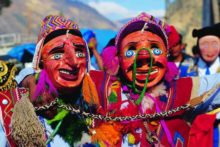 Inti Raymi is still celebrated in indigenous cultures throughout the Andes. Celebrations involve music, colorful costumes (most notable the woven aya huma mask) and the sharing of food.
Inti Raymi is still celebrated in indigenous cultures throughout the Andes. Celebrations involve music, colorful costumes (most notable the woven aya huma mask) and the sharing of food.
In many parts of the Andes though, this celebration has been connected to the western festivals of Saint John the Baptist, which falls on the day after the northern solstice (June 21).
Although Midsummer Day occurs at the summer solstice, or what we think of as the beginning of summer, to the farmer it is the midpoint of the growing season, halfway between planting and harvesting, and an occasion for celebration.
The most common other names for this holiday are the Summer Solstice or Midsummer, and it celebrates the arrival of Summer, when the hours of daylight are longest. The Sun is now at the highest point before beginning its slide into darkness.
Celebrating Midsummer Day
Although it’s also the feast day of St. John the Baptist, it features pagan traditions such as bonfires, fire walking, and a carnival atmosphere, all of which took place on Midsummer Eve. Certainly, it’s a night of magic and soothsaying as well, for as Washington Irving said, this is a time “when it is well known all kinds of ghosts, goblins, and fairies become visible and walk abroad.” After Midsummer Day, the days shorten.
In Sweden and Norway at the Solstice, people made wheels of fortune. Some of the wheels were wrapped in straw, set on fire, and rolled down hill. Other wheels were decorated and kept. These were used in two ways: One, the wheel was rolled away from a person to take away misfortunes; two, it was rolled toward a person to bring all kinds of good fortune.
Variations on the Midsummer celebrations:
People around the world have observed spiritual and religious seasonal days of celebration during the month of June. Most have been religious holy days which are linked in some way to the summer solstice.
- Scottish Pecti-Witans celebrate Feill-Sheathain on July 5th.
- In the Italian tradition of Aridian Strega, this Sabbat (Strega Witches call them Treguendas rather than Sabbats) is known as Summer Fest – La Festa dell’Estate.
- Scandinavians celebrate this holiday at a later date and call it Thing-Tide.
- In England, June 21st is “The Day of Cerridwen and Her Cauldron”.
- In Ireland, this day is dedicated to the faery goddess Aine of Knockaine.
- June 21st is “The Day of the Green Man” in Northern Europe.
In Lithuanian tradition, the dew on Midsummer Day was said to make young girls beautiful and old people look younger. It was also thought that walking barefoot in the dew would keep one’s skin from getting chapped.
It was customary to honor all men named John on this day by fixing wreaths of oak leaves around their doors. This is usually done in secret, and John must guess who did it or catch the person in the act, in which case he must give the person a treat.
Midsummer Celebrations in Ancient Times:
The solstice itself has remained a special moment of the annual cycle of the year since Neolithic times. The concentration of the observance is not on the day as we reckon it, commencing at midnight or at dawn, but the pre-Christian beginning of the day, which falls on the previous eve. Other names for this time in the Wheel of the Year include:
- Alban Heruin (Caledonii or the Druids)
- Alban Hefin (Anglo-Saxon Tradition)
- Sun Blessing, Gathering Day (Welsh)
- Whit Sunday, Whitsuntide (Old English)
- Vestalia (Ancient Roman)
- Feast of Epona (Ancient Gaulish)
- All-Couple’s Day (Greek)
Ancient Celts: Druids, the priestly/professional/diplomatic corps in Celtic countries, celebrated Alban Heruin (“Light of the Shore”). It was midway between the spring Equinox (Alban Eiler; “Light of the Earth”) and the fall Equinox (Alban Elfed; “Light of the Water”). “This midsummer festival celebrates the apex of Light, sometimes symbolized in the crowning of the Oak King, God of the waxing year. At his crowning, the Oak King falls to his darker aspect, the Holly King, God of the waning year…” The days following Alban Heruin form the waning part of the year because the days become shorter.
Ancient China: Their summer solstice ceremony celebrated the earth, the feminine, and the yin forces. It complemented the winter solstice which celebrated the heavens, masculinity and yang forces.
Ancient Egypt:In Ancient Egypt, summer solstice was the most important day of the year. The sun was at its highest and the Nile River was beginning to rise. Special ceremonies were held to honor the Goddess Isis. Egyptians believed that Isis was mourning for her dead husband, Osiris, and that her tears made the Nile rise and well over. Accurately predicting the floods was of such vital importance that the appearance of Sirius, which occurs around the time of the summer solstice, was recognized as the beginning of the Egyptian New Year.
Ancient Gaul: The Midsummer celebration was called Feast of Epona, named after a mare goddess who personified fertility, sovereignty and agriculture. She was portrayed as a woman riding a mare.
Ancient Germanic, Slav and Celtic tribes in Europe: Ancient Pagans celebrated Midsummer with bonfires. “It was the night of fire festivals and of love magic, of love oracles and divination. It had to do with lovers and predictions, when pairs of lovers would jump through the luck-bringing flames…” It was believed that the crops would grow as high as the couples were able to jump. Through the fire’s power, “…maidens would find out about their future husband, and spirits and demons were banished.” Another function of bonfires was to generate sympathetic magic: giving a boost to the sun’s energy so that it would remain potent throughout the rest of the growing season and guarantee a plentiful harvest.
Ancient Rome: The festival of Vestalia lasted from June 7 to June 15. It was held in honor of the Roman Goddess of the hearth, Vesta. Married women were able to enter the shrine of Vesta during the festival. At other times of the year, only the vestal virgins were permitted inside.
Ancient Sweden: A Midsummer tree was set up and decorated in each town. The villagers danced around it. Women and girls would customarily bathe in the local river. This was a magical ritual, intended to bring rain for the crops.
Information collected from various sources
- Color of the day: Green
- Incense of the day: Clove
June 11 is the Festival of Mater Matuta, an old Italian goddess of the dawn who was the goddess of the dawn and the protector of growing crops and growing children. Today a free woman in the first year of her marriage would make offerings of toasted cakes to the goddess, and ask for blessings on her nieces and nephews. The Romans eventually made equivalent to the dawn goddess Aurora, and the Greek goddess Eos.
Aurora, known among the Greeks as Eos, is honored on this day. It is she who opens the gates of heaven each day so that Helios may ride his chariot across the skies. Her tears create the morning dew. Try greeting Aurora today as she opens the gates of heaven. Walk barefoot through the grass, feeling her tears upon your skin. Connect with her eternally youthful soul.
Then, as Helios begins his journey across the sky, settle yourself in a quiet place outdoors and let the light bathe your face for a short time as you meditate on the beauty you bring into your world each day. Once you finish your meditations, pay tribute to Aurora for her task of opening the gates for each new day to bring light in the world. Take with you her beauty and grace as you go about your day and tasks.
By Winter Wren
According to some pagan calendars, May 14 is listed as the Birthday of Apollo. However, according to the mythology, Apollo was born on the seventh day of the month Thargelion. Wikipedia goes on to say that this was according to Delian tradition, and that according to Delphian tradition, it was the seventh day of the month of Bysios. The seventh and twentieth, the days of the new and full moon, were also held sacred to him.
If the exact date is important you you, I’d suggest you take a look at the Wikipedia article on the Attic Calendar which gives the names of the months and their approximate times in the year. For the purposes of simplicity, I would suggest that the 7th day following either the New or Full Moon in May (May 17 in 2017) would fit the criteria and make for a fine day to celebrate the birth of the God of Light Apollo.
Who is Apollo? Here’s a brief profile:
Apollo is the son of Zeus and Leto. His twin sister is Artemis. He is the god of music, playing a golden lyre. The Archer, far shooting with a silver bow. The god of healing who taught man medicine. The god of light. The god of truth, who can not speak a lie.
One of Apollo’s more important daily tasks is to harness his chariot with four horses an drive the Sun across the sky. He is famous for his oracle at Delphi. People traveled to it from all over the Greek world to divine the future. His tree was the laurel. The crow his bird. The dolphin his animal.
Source: Wikipedia
Throughout the year, the sun waxes and wanes. At the Winter Solstice, the shortest day of the year, the sun is only visible for a few short hours. Days become longer and at the Spring or Vernal Equinox, day and night are equal. At the Summer Solstice, the sun is visible for the longest period of time (the longest day of the year). Days start to become shorter and at the Autumnal Equinox, day and night are equal again. Finally, as the sun wanes, we are at the Winter Solstice again.
During a solar eclipse, we experience what might be called a “micro year”. The sun is whole, then partially or completely hidden, and then visible again. Within just a few minutes, an energy similar to a complete cycle of solstices and equinoxes can be felt.
In addition to this somewhat seasonal energy, we are aware of the Moon’s presence. Her shadow falls across the Earth as she appears between the Earth and the Sun. This adds the unification of solar and lunar energy, reinforcing the sense of wholeness, completion and cycles of a solar eclipse.
Consider this fact about solar eclipses: A solar eclipse can only occur during the day, on a new moon. This means that you are working with new moon energy (great for getting rid of things and letting go).
A solar eclipse does not have to be visible for you to work magic. You won’t be able to see every eclipse unless you can travel all over the world easily! Simply look at charts and almanacs to find the exact time of the eclipse, and work your magic then.
Solar eclipses are perfect for some specific types of magick. Consider the solar eclipse of June 10/11, 2002. Because this eclipse was close to the Solstice, the energy of the Solstice dominated the beginning of the eclipse.
In the Northern Hemisphere of the world, the sun is waxing as we near the Summer Solstice (In the Southern Hemisphere, the sun is waning and the Winter Solstice is approaching.)
When an equinox occurs at the time of the waning year (from the Summer Solstice to Yule) it is a good time to rid yourself of unwanted energies, bad habits, unhealthy patterns of thinking and acting, negativity, and other baneful things in your life. You can work with both the new moon energy, and the waning year energy, in addition to the energy of the eclipse.
Here’s an example:
Your ex-lover caused you a lot of pain. Whenever your new love gets close to you, you push away to prevent getting hurt again. You realize that you cannot fully love this new person until you let your guard down. About a half hour before the eclipse begins, you work to let go of the old pattern of pushing away. As the eclipse begins, you feel the pattern dissolving. As the eclipse is ending, you reinforce the growth between you and your new love, and the growing trust within you. This waning/waxing type of magic works well with eclipses.
Consider the time of year the solar eclipse will occur during. Is the sun waxing or waning? Next, consider the lunar influence, the moon is new and will be waxing in a day or two. Finally, consider the waning/waxing energy of the solar eclipse. Use this information to develop your own, tailor-made spells, rituals and rites.
Another interpretation:
A Solar Eclipse occurs in nature as a phenomenon when the Moon enters between the Sun and the Earth therefore blocking (or better thinking as filtrating) the light of the Sun. In astrology a Solar Eclipse is a very powerful New Moon, while every month has a new Moon, a solar eclipse occurs approximately every six months.
A Solar Eclipse can be seen as a very powerful New Moon where important beginnings or endings occur, it is the perfect time to work magic in your life especially related with previous thoughts and ideas that were holding you back.
You can imagine how a solar eclipse works by imagining the following narrative:
Imagine yourself as a caterpillar that has willingly entered in its cocoon of contemplation. You remember your old self, the thoughts you made and the actions that these thoughts have led you to take. You have all the ideas about yourself who you want to be and what you want to do with your future. All these ideas and thoughts-the past, present and future- coexist during this stage.
The solar eclipse will give you the power when you are ready to break this cocoon and will give you the boost to completely transform into a new form, the butterfly. Hence, the Solar Eclipse is the perfect timing for a Metamorphosis, transcendence to a new state of being. Cutting down all the restraints that were bounding you to the ground and give you the breeze to flip your wings and fly and explore the world with a new set of wise eyes.
A Solar eclipse is often described in alchemic and occult texts as the Alchemical Wedding where the Sun marries the Moon, a perfect balance.
Alternatively:
The solar eclipse is the symbol of the Dark Lord, also called the Lord of Shadows, the Leader of the Wild Hunt, Hades, Pluto and the death and resurrection aspects of Cernunnos, Dionysus — and, on a cosmic level, Shiva, among others. The Christian comparison is the portion of the crucifixion of Jesus when he descends into hell then resurrects. As such, the solar eclipse (the Bible story of the crucifixion states the sun darkened at 9.00 am) is a time for ritual observances that link the practitioner with the death passage portion of the cycle of life.
This is an opportunity to connect with the Shadowlands or the Underworld and to face one’s own fears and uncertainties about death. By confronting death through meditation, the face of Death is unmasked. The face one sees may initially be grotesque and horrible, but once the beholder accepts that this is also the face of the giver of life’s energy, that face changes and is beautiful to behold. This is the significance of focusing on the passage. By facing our fears, we gain insight and freedom — death is no longer to be feared.
Once a person is no longer fearful of death or the Underworld, the solar eclipse becomes a good time to honor ancestors, visit with the spirits of the departed, charge Craft tools of dark power magics and honor the Dark Powers.
The eclipse does not last long, so lengthy ceremonies would not be in order unless you create one that begins prior to the eclipse and encompasses the eclipse. Instead, if you are feeling connected, you may simply want to light some incense and a candle and invite some departed to visit with you for just a little while so you can ask for guidance, tell the person you love him/her, offer forgiveness or ask for it as the case may be, or use the time to celebrate your union with the Crone and the Dark Lord. It is also a good time to end anger and hostility, so that when the Sun reappears the Light will shine within you as well upon the Earth.
Sources:
- Green Witchcraft
- Ancient Magical Recipes Online
- Angel at Care2Share
